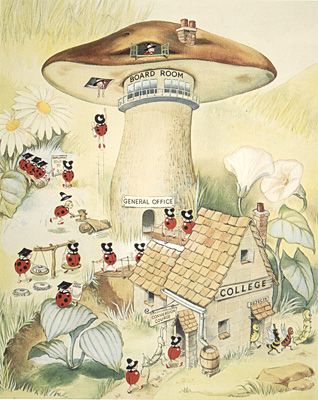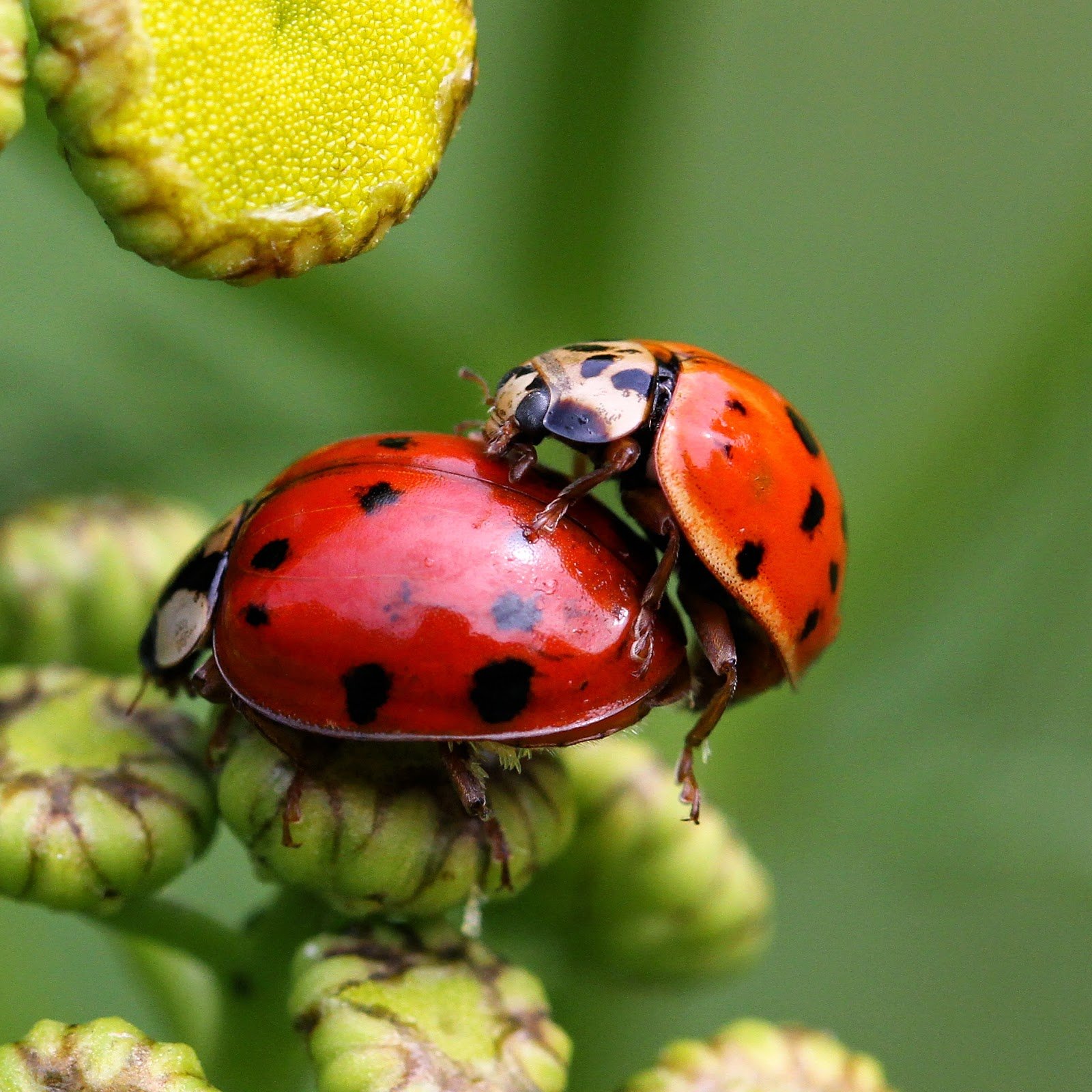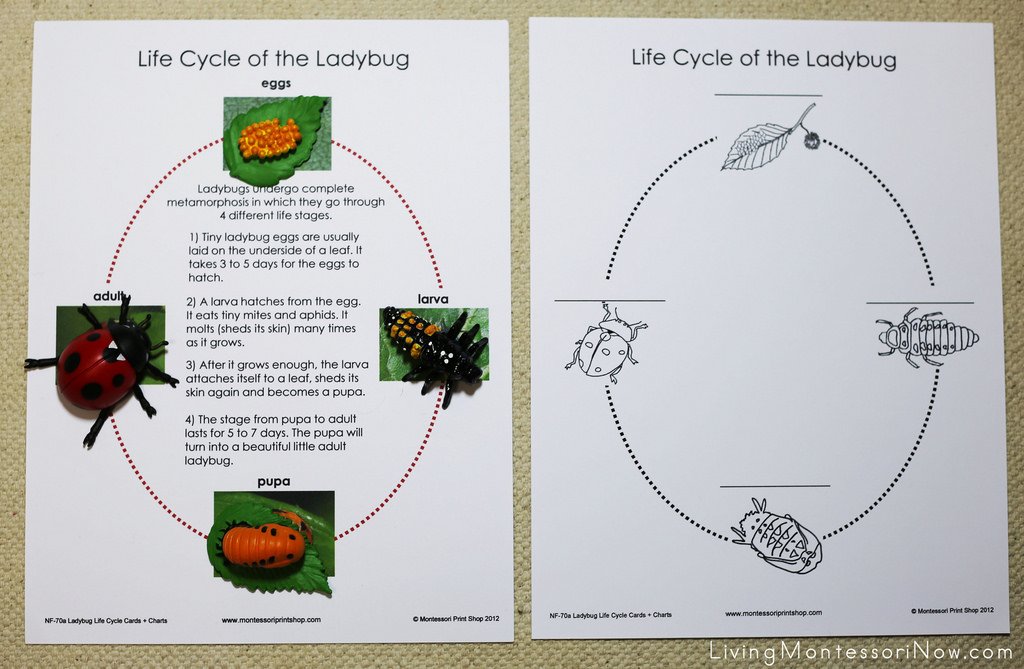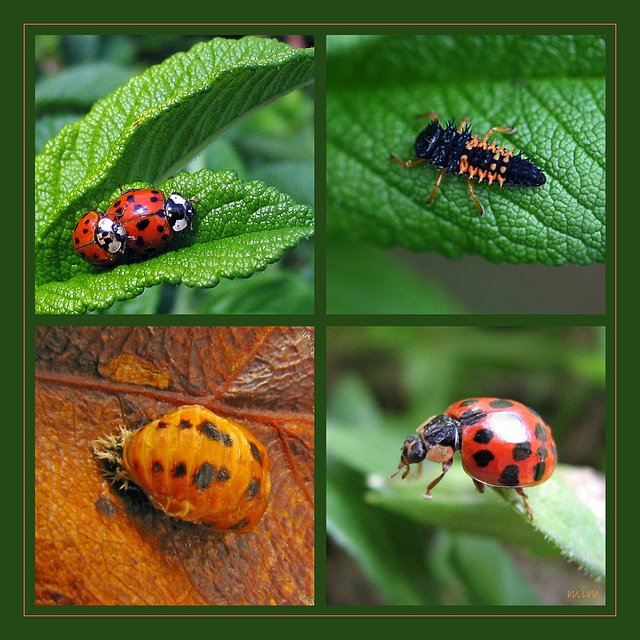Ladybirds - Your Best Bet in the War Against Aphids
Written by Chrys Stevenson
Ladybird, ladybird,
Fly away home,
Your house is on fire
And your children all gone;
All except one
And that’s little Ann,
And she has crept under
The warming pan.

Anyone who has grown roses has, by default, entered into a seemingly endless war with aphids.
Most of us reach for a bottle of pest spray. But, Australia’s Foundation for National Parks and Wildlife warns that, by using sprays, you could, inadvertently, be killing your best defence against aphids – ladybirds.
From larvae to adulthood, ladybirds feed voraciously on aphids – each single insect chowing down on around 2,500 – 5,000 aphids per year.
Here’s an interesting bit of ladybird history! In the 19th century, Californian citrus farms became infested with Australian scale insects. In a stroke of genius, the farmers imported Australian lady birds and released them into the orchards. Within two years the orchards were free of the bugs, saving the entire industry.
Today, science recognises ladybirds as an effective, natural and non-toxic method of dealing with aphids. As in the case of the Californian citrus farms, large scale releases under controlled conditions have proven effective in saving crops, and eradicating aphids in greenhouses.
But, when it comes to your home garden, entomologists advise you’re better to cultivate an environment that will encourage ladybirds naturally, rather than buying them in. Buying ladybirds is possible, but it’s costly and, like the nursery rhyme, they’re likely to “fly away home” – or at least into your neighbours’ yards – leaving you only with “little Ann” – the one who “crept under the warming pan”!
Remember the Kevin Costner film, “Field of Dreams” and the famous line, “If you build it they will come”? Well, you don’t have to build a baseball field in your cornfield to attract these tiny aphid-eating heroes – you just have to make your garden the kind of place that ladybirds will fly home “to”. Here are some tips:
•Mulch your garden – ladybirds like damp, moist, warm conditions. Ladybirds also like fungus and mould, so don’t pull up your vegetable plants when they’ve ceased producing – leave them to die in the garden. Ladybirds will lay their eggs on the undersides of the rotting leaves.
•Plant herbs and flowers with strong fragrances – for example, parsley, coriander, fennel, dill and marigolds. They also like to cluster on alfalfa, melons, zucchini and cucumbers, asters, alyssum and sunflowers.
•Grow native plants which produce nectar and pollen – this produces an alternative food source for ladybirds who may fly away as your aphid population dwindles. You can also feed your ladybirds by spraying a harmless but ‘yummy’ concoction on your plants. This is a an inexpensive pollen substitute used by beekeepers.
Mix together:
1/2 cup sugar
2 tsps honey
4 tbsps brewer’s yeast
2/3 cup of warm water
Store in your refrigerator for up to a week.
To spray: Add a couple of tablespoons of the mixture to a litre of water.
Otherwise, simply distribute the mixture around your garden in saucers.
•Ladybirds love water – they need it for hydration, but wet plants also help their feet stick to the leaves and stems. Add some water features in your garden and water your plants frequently (preferably early morning or later in the afternoon to avoid rapid evaporation).
•Don’t mistake ladybird larvae for caterpillars and kill them. This page from Organic and Lunar Gardening Blog shows what juvenile ladybirds look like. Hint – they look NOTHING like ladybirds.
•Ladybirds lay their eggs amongst the aphids – so don’t squash aphids or you’ll be squashing ladybird eggs too!
•Avoid using insecticides – even those with low toxicity. Copper and nutritional sprays will usually not harm your ladybirds and some miticides, like Neem Oil, are also fairly safe. Carbamate (like Cabaryl), organophosphate (some grub killers and Malathion and Orthene, for example) and synthetic pyrethroid insecticides are toxic.
•Don’t stress about a few aphids – your ladybirds need aphids to feed on or they’ll fly away! If you have a plant with a particularly bad infestation, use a high pressure garden hose to spray most of the aphids off. Just remember those ladybird eggs though. You could be spraying them off too!!
•Build a Ladybird Hotel to house your aphid-eating friends over winter. It’s easy! Simply stack small hollow bamboo tubes or other hollow stems horizontally in an open sided box. A bird box with the front cut out makes an attractive feature for your garden. Here are some suggestions: Ladybird Hotel, Ladybird House.
Click here to see link





Add your comment…